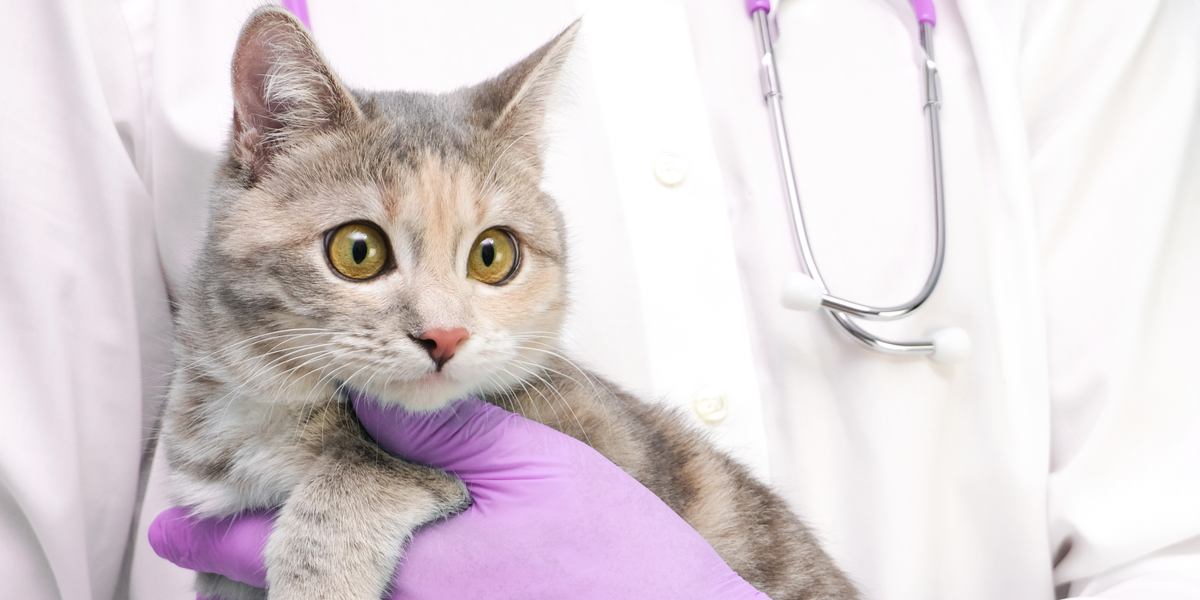
Phenobarbital is an anti-convulsant medication used commonly in veterinary medicine to help manage conditions that cause seizures. In this article you’ll learn how phenobarbital treats patients suffering from a seizure disorder, side effects to watch for, and some frequently asked questions.
Phenobarbital for Cats Overview

About Phenobarbital for Cats
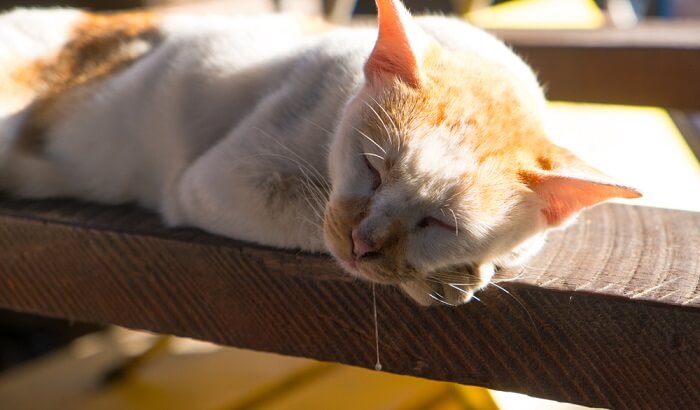
Phenobarbital is a barbiturate medication. Barbiturates are a class of drugs that act as central nervous system (CNS) depressants. They can be used as sedatives, to treat anxiety, and to control seizure disorders.
A seizure occurs when a sudden discharge of electrical signals occurs in the brain that leads to involuntary activity of the body, or seizing.
Patients experiencing a seizure often lose consciousness and the body may then exhibit the appearance of muscle spasms or convulsions, or a pet may go completely rigid with stiff muscles. Drooling, urination, and defecation may also occur.
Seizures can occur for a variety of reasons. The presence of brain tumors and inflammatory lesions in the brain can be one set of causes where something structurally abnormal is present. Pets may also develop seizures from certain underlying medical disorders like liver and kidney disease, toxin ingestion, or if a diabetic cat’s blood sugar goes too low.
But seizures can also occur secondary to a condition known as idiopathic epilepsy. With epilepsy, the neurologic overexcitement occurs leading to a seizure, but there is no known cause. Pets with epilepsy often have normal MRI (magnetic resonance imaging) scans of the brain.
As an anticonvulsant medication, phenobarbital helps to reduce the chance of a seizure occurring by reducing the abnormal electrical activity that leads to seizure episodes. There are several types of antiseizure medications available, each working in a different way, with some more effective in some cases than others.
Phenobarbital is one of the oldest antiseizure/antiepileptic drugs available for treating cats with seizure disorders.
What Does Phenobarbital Do for Cats?

Barbiturates like phenobarbital generally cause depression of the central nervous system (CNS). They can inhibit a few different neurotransmitters, including acetylcholine, norepinephrine, and glutamate. Their actions raise the seizure threshold, requiring a lot more electrical overexcitement in the brain to have to occur to cause a seizure. This generally reduces the frequency of seizure events.
The degree of CNS depression phenobarbital causes depends on its dose. Their effects can also depend on a patient’s age, physical condition, and other medications being taken.
Although it has been around for a long time, phenobarbital is still one of the best medications to be used as a primary drug, or monotherapy, for a seizure condition. It tends to be more effective as a first-line choice compared to some other anti-seizure medications like zonisamide and potassium bromide.
Phenobarbital is also very inexpensive, making it a preference in some cases, especially for long-term use, compared to an effective but much pricier anti-seizure medication like Keppra (levetiracetam).
Side Effects of Phenobarbital for Cats

One common side effect of phenobarbital is excessive drinking and urination.
The most common adverse effects seen in cats on phenobarbital include balance issues when walking, drowsiness, facial itching, an excessive need to eat (leading to weight gain), and excessive drinking and urinating.
While very rare, immune-mediated reactions like reduced white blood cell and platelet counts have been described.
Because it depresses the central nervous system, respiratory depression (ineffective breathing) can occur. Cats appear to be more sensitive to this effect, though it is still typically only seen at higher doses.
Phenobarbital is largely metabolized by the liver. Unlike in dogs, who commonly have liver value elevations on their bloodwork, at least for the first couple of weeks when starting phenobarbital, cats do not appear to have the same sensitivity and liver value abnormalities are considered rare in kitties.
All the same, phenobarbital should be used with great caution in any cat with an underlying liver disorder. Because of the importance of having good liver function on this medication, veterinarians commonly check blood work prior to starting phenobarbital and then at least every six months thereafter.
Phenobarbital should also be used cautiously in any cat that is in a state of dehydration, has a low red cell count (anemia), cardiac disease, or respiratory disease.
While phenobarbital does not have direct effects on the kidneys, its effects on lowering blood pressure, which is called hypotension, can lead to concerns with renal function if pressure within the kidneys drops too low. This is typically also more a concern with high doses and overdoses.
When first starting phenobarbital, it is common to see excessive sleepiness, lack of energy, greater thirst and appetite, and an increased need to urinate. These signs typically abate after about three to four weeks.
In overdose situations, a majority of cats show signs of difficulty walking or keeping their balance and lethargy/sedation.
Phenobarbital can have drug interactions with other medications. For cats, common ones may include the appetite stimulant mirtazapine, the sedative dexmedetomidine, and opioids like buprenorphine, which should be used cautiously. Use with antihistamines may also increase the sedative effect.
There are many medications where concurrent phenobarbital use will decrease their effectiveness and their doses may need adjustment when starting phenobarbital or vice versa. Always make sure to discuss any medications or supplements your cat is currently taking when starting phenobarbital is being considered.
If you are ever concerned that your kitty may have developed side effects while using phenobarbital, or if an overdose is suspected, make sure to contact your primary veterinarian, neurology veterinarian, the ASPCA Animal Poison Control Center (1-888-426-4435) or Pet Poison Helpline (1-855-764-7661) immediately for further advice.
Phenobarbital for Cats Dosage
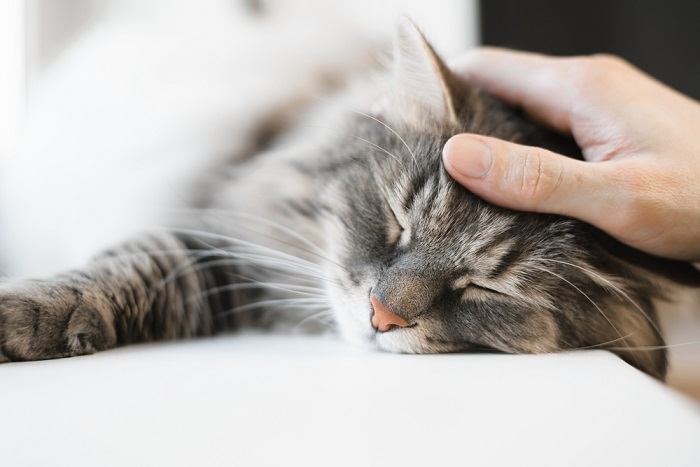
Though phenobarbital is considered a safe medication for cats, it can pose significant concerns if dosed too high, overdosed, or when it is improperly used.
Phenobarbital is used in an extra-label manner, meaning that it does not carry an FDA label, but a veterinarian can still prescribe it as long as an active relationship with the patient is present. This is very common when medications also used for humans are used in pets.
Phenobarbital is a schedule IV controlled substance. This means that at least in humans, it has some potential for abuse, and prescribed amounts and refills are carefully monitored.
Phenobarbital is prescribed for people with seizure and sleep disorders. It is extremely important to never use any medication you may have at home in your cat. Human doses and cat doses of a common medication may differ significantly and serious side effects could result.
Phenobarbital is considered a safe medication for cats when dosed properly, but can have significant concerns when dosed too high, overdosed, or when it is improperly used.
For these reasons, a specific dose for phenobarbital is not provided here. It is very important to always consult with your veterinarian before starting a medication like phenobarbital.
It’s also important to not give your cat an extra dose of phenobarbital or to alter the dose yourself if a seizure event has recently occurred. If your cat is actively having a seizure, it is most important to get your kitty to the nearest veterinary hospital for treatment. Never try to administer an oral medication to a pet that is actively seizing.
Safe use of phenobarbital involves checking the blood levels of the medication in the body through blood work. This is commonly recommended every six months. This is the best way to know if the drug is maintaining therapeutic levels, what dosage is most effective, and whether any adjustments need to be made. Serum phenobarbital levels should always be rechecked after any dosage adjustments.
Phenobarbital may be given with or without food. However, if any digestive upset occurs, giving with food may help.
Phenobarbital should not be discontinued abruptly as this can lead to withdrawal syndrome. This can be the case if a kitty has been on the medication for even just a few weeks. The medication is typically weaned slowly to help the body adjust. Weaning slowly is also important because seizures may recur if the medication is discontinued too quickly. Another medication to control seizures will typically need to be started at the same time that phenobarbital is being weaned.
Conclusion
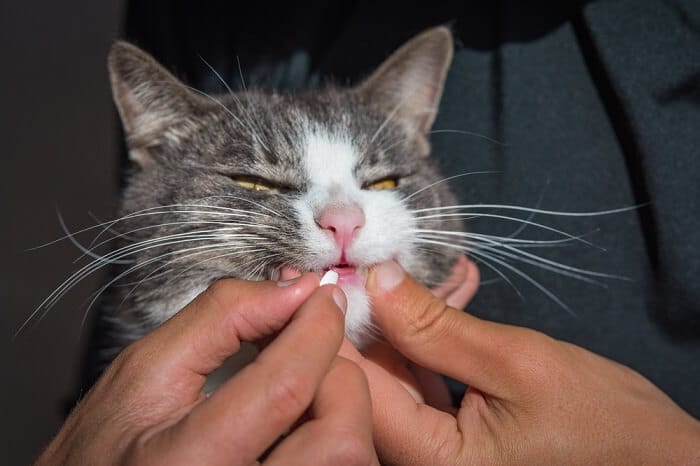
Phenobarbital is a long-standing medication for control of seizures in cats and it is typically very effective at controlling seizures. It is also very inexpensive. It does have some expected side effects to monitor for when first starting it, especially lethargy, increased appetite, excessive water consumption, and urination changes, but many of these dissipate after a few weeks. It does require more frequent blood work monitoring than some other medications.
Phenobarbital can also have many interactions with other medications that may require dose adjustments. Always make sure to discuss your cat’s medical history and other medications thoroughly with your veterinarian before starting phenobarbital for the best and most cautious approach to your cat’s health care.
Frequently Asked Questions
What does phenobarbital do to cats?
Phenobarbital is used primarily as an anti-seizure medication in cats. It raises the seizure threshold and reduces seizure frequency by acting as a depressant of the central nervous system (CNS).
With proper dosing, phenobarbital is very effective at controlling seizures. However, at higher doses, the CNS depression can lead to more concerning effects like sedation, lethargy, respiratory depression, and low blood pressure. This is why careful and accurate dosing by a veterinarian is very important.
How long can a cat live on phenobarbital?
This may depend more on the primary cause for a seizure disorder, as well as the general state of health of a particular kitty. In a cat that is otherwise healthy, and has, say idiopathic epilepsy, a normal life expectancy may be possible. Liver toxicity has not been described in cats like it has in dogs, and with proper dosing they can tolerate the medication fairly well.
However, in a cat with concomitant liver disease or other health concerns, phenobarbital may manage seizures well, but also contribute to more significant side effects. If a cat is suspected to have a cancerous tumor causing seizures, phenobarbital will still control signs at least initially, but a kitty’s prognosis would be more linked to the nature of the type of cancer.
How long does it take phenobarbital to work in cats?
Phenobarbital can take a few hours to reach its peak effectiveness. This may take anywhere from four to 12 hours when dosed orally.
After starting phenobarbital or making dose changes, blood serum levels may not be checked for a couple of weeks, as it does take some time for the body to adjust to the medication.
Can phenobarbital cause death in cats?
This is very uncommon, but in theory could occur if a very high dose is given or if a cat in an ill or sick state is given the medication. Fortunately, most cases of cats getting an overdose of phenobarbital that have been reported to the ASPCA Animal Poison Control Center only exhibited signs of lethargy and ataxia (balance and walking issues).
Cats do appear to be more sensitive to the respiratory depression effects of phenobarbital when given at higher doses.
Phenobarbital should not be confused with pentobarbital, which is commonly used as a euthanasia drug in veterinary medicine. While they are both barbiturates, pentobarbital is more potent than phenobarbital. Pentobarbital also does not come in any oral administration forms.





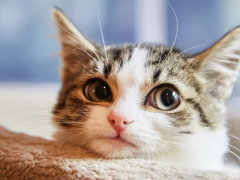


I halved 16.2 mg tablets for my cat and crushed them in her food. I now have a new subscription, also for 16.2 mg, but there seems to be a coating on the pills that makes them difficult to cut and crush. Also, my cat is not eating all of her pill.
Is there a location where I can order the uncoated pills? (I have a script from my veterinarian.)
Hi Mary, thanks for your question. It sounds like you might have been given tablets with an enteric coating. These are typically not meant to be split or crushed which is why you may have had some trouble doing that. I’m not certain how common a form this is when it’s dispensed as a generic medication at a human pharmacy but if you’re getting your phenobarbital from a human pharmacy, I would say the best thing to do would be to ask the pharmacist to be more sure that you are provided with an uncoated form.
My cat started phenobarbital 2 days ago 8pm and I missed the 3rd dose. So I gave it to her about 8 hrs late 4:30 am Now I’m not sure when to give next dos?
Hi Marianne,
First, I’ll lay out a couple of assumptions I’m making based on what you wrote. It sounds like you started the first dose at 8pm the first night you started the phenobarbital, then gave the next at 8am the next morning. It sounds like the next 8pm dose was what was missed, and you gave the next dose at 4:30am, about 20 hours after the most previous dose.
The best rule of thumb is to try to continue giving a medication as close to the prescribed schedule as possible to get yourself back on track.
Some doctors would likely say that since the next dose would be due in only 3 1/2 hours, that it would be advisable to wait until that next 8pm dose. Although that’s 16 hours later instead of 12, it’s still a shorter interval than the 20 hours from the missed dose.
Another general strategy is to get yourself gradually back on track by giving the next dose at 4:30pm 12 hours later, then gradually push the times back each day for 3-4 days until you’re back to your 8am/pm dosing schedule.
Either strategy can be okay as long as you’re not seeing breakthrough seizures, but it’s always best to check with your own vet to see what approach they might prefer.
My cat is taking the medication for Epileptic issues. He was shaking his head from side to side while his ears jerked back and forth, his legs and body were showing jerking effects as well. The vet gave him the small pill which I cut in half and crush it, I add it to some pate food which he eats readily. He was on dry food only before. After three weeks today he is far more withdrawn acting. He was so active following me around and sitting watching TV in the evening. But now he mostly lays on a chair or the floor. He also is walking less stable and still has some feet moving repletions when he lays down. He has a slight but noticeable grown when breathing much of the time. He just seems to have lost much of his drive. I give him half a pill in the morning and evening. I am hoping these effects will go away but so far I don’t see much evidence of that.
Hi Larry,
Thanks for your question. When first starting phenobarbital, it can be common to see an initial period of lethargy, sometimes accompanied by poor appetite. These signs can resolve on their own, usually within 30 days. If it’s been 3 weeks, it’s possible these signs will improve in another week or so. However, cats can also develop balance and walking issues, persistent sedation, and changes in food and water intake, as general side effects to this medication. If you feel these types of side effects have been going on longer than expected, if they seem profound, or are worsening, it would be best to get in touch with your vet to get their opinion.
My cat has been taking a half a 16.2 MG pill twice daily. He has shown a few moments of he epileptic situation. However he has changed personality a lot. He used to follow me around much of the time, he would come in and watch
tv often beating me to the foot stool he would sit on to be petted. Now he rarely does that. I notice his appearing somewhat clumsy walking also and many days sit in one place for most of the day.. I put a small piece of carpet down in the kitchen to use for the sink area an he took it over and often stays there for hours on end. Reading the article I see that stopping it at least quickly wouldn’t be a good idea, but i wonder if cutting that half pill to a once a day with maybe alternate two times every other day might lessen his isolation. He was a wonderful pet but this has radically changed his demeanor. He is a very large cat and weighs around 23 pounds. I have also see some none drug advertisements on line with people saying it really helped their cat that couldn’t tolorate well the Phenobarb treatment. Any thoughts on this.
Hi Larry, if you’re seeing these effects in your kitty and you’re still within about a 30 day period of starting phenobarbital, you may be seeing a transient phase of decreased activity and lethargy that can commonly occur when the drug is first started. It’s not generally advised to reduce the dose, especially if you’ve just started, because you may not be at a therapeutic dose and you risk the chance of recurrent seizures. Blood levels are usually checked after a few weeks to verify the starting dose is effective.
Usually within 3-4 weeks, these negative effects dissipate and activity returns more to normal. If you are beyond this initial starting period, I would check with your vet on next steps. If dosage is reduced, blood levels usually need to be checked to ensure the dose is still therapeutic. Other bloodwork may be recommended too.
I would never assume a supplement or similar non-prescription online product is effective for seizures. These products often have no clinical trials or research to support their use, even if they have good reviews. This is especially true of CBD products, which have a high variability in ingredients.
Hi was wondering if your cat is doing better now ? My cat is doing the same thing. I don’t know what to do!!
He has just been on the drug for two months when I wrote. I picked up the new prescription a couple days ago. The vet said it won’t hurt to try the herbal treatments since it has no drug interaction with the Phenobarbital. I am going to try that and gradually reduce the pills to see what happens. I appreciate your taking time to answer my questions. I will let you know how it all works out.
Hi, my cat has the same sickness. We’ve just started with the Phenobarbital, how is it going with the CBD?
I live in the United Kingdom. A few years ago I gave my cat a common flea treatment available here, that I bought from a Dutch company via Amazon. I later discovered through the BBC that some of these non-prescription treatments contain something called “permethrin”, which (bizarrely) is legal in the UK. It is toxic to cats, causing kidney damage and seizures. Now my poor kitty needs phenobarbital twice daily and Porus One for her kidneys.
PLEASE do not EVER use an unprescribed medicine on your precious cat. Even if (like the one I bought) it has a massive photo of a cat on it!
I’m trying to get the word out, so I hope this message might help some other cat owner to safeguard against this eventuality, or at least get the right help after the fact!
Sincerely,
Alan
Hi Alan, thank you for this comment. Can you please share the name and/or a link to the product you’re describing?
Hi Mallory… thanks for your reply. I didn’t name the company because I wasn’t sure if cats.com would have issues with it being named explicitly.
But here is a link to the BBC article which names the company and product so just click here: https://www.bbc.co.uk/programmes/articles/138BSZCcBzrwrYL0yRN52PP/watchdog-flea-collars
Alan
Hi Dr. Vanderhoof, My 16 yr. Old cat has been put on 16.2 mg phenobarbital/twice a day. He weighs 10 lbs. We tried cutting the dose in half initially but he had a seizure. He’s been on the full dose for a week. He’s extremely lethargic. He’s also very unsteady on his feet. My vet doesn’t give me advice. I’m now being told I could try another medication if I want which would be three times a day. I just want to know if this is normal and should I wait it out? He can barely stand up to eat. I’ve making sure he eats and drinks. The litter box is difficult for him but he’s still using it just less frequent. I’m worried about him and want to do what’s best. We have another vet apt. in a couple weeks. I feel like switching the medication might be a big deal. I just don’t know. Vet doesn’t get back to me. I don’t mind waiting it out or changing meds. I just need advice.
Any suggestions would be appreciated!
Thank you!
Hi Cathy, I’m sorry your kitty is having a hard time and that it has been difficult getting in touch with your vet. When first starting phenobarbital, it can be common and expected to see lethargy and ataxia (the signs of being unsteady on his feet) early on. I often try to set this expectation when starting this medication. It’s not possible to predict with accuracy when this will resolve for a particular pet, but these side effects rarely continue beyond 30 days. In many cases, the side effects resolve after that point. If lab work has not been checked though, it can be useful to make sure nothing more serious is going on. While dogs often have liver value elevations occur when on phenobarbital, cats rarely do and any labwork abnormalities found could indicate something more serious beyond the typical initial side effects is occurring. The three times a day medication is likely Keppra (levitiracetam), which can have fewer side effects, but is more expensive and does require the more frequent dosing to be effective.
Thank you for your response Dr. Vanderhoof! Vet did do bloodwork and were scheduled to do more in a couple weeks. We elected to not do an mri etc..He’s too old. I just want him comfortable. It’s very difficult to watch him struggle to stand up and walk. He keeps falling. I’m hoping to talk to our vet soon. I just feel like he’s over medicated but will wait and see. I appreciate your input!!
Thank you very much!
Cathy